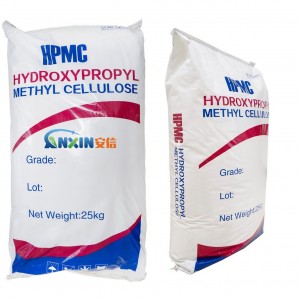Hydroxypropyl MethylCellulose in Improving the Cement Effect
Hydroxypropyl MethylCellulose (HPMC), as one of the most core water-soluble cellulose ethers in the building mortar system, plays an irreplaceable role in the performance regulation of modern building materials. Especially in cement-based materials, HPMC has demonstrated significant improvement effects on the hydration process, rheological properties, workability, physical and mechanical properties, etc. Its unique molecular structure and viscoelastic properties of the solution make it a key additive for improving construction quality and material stability.
1. Improve water retention: Delay hydration and promote uniform hardening
The hydration of the cement system requires sufficient free water. However, traditional cement mortar often loses water too quickly during construction due to factors such as water absorption by the base material, evaporation, and air drying, which affects the strength development and later performance.
HPMC forms a continuous network structure, stably encapsulating free water within it, effectively inhibiting water loss and keeping the mortar sufficiently moist during the open time, thereby bringing about the following improvement effects:
Slow down the initial hydration rate to avoid rapid setting which may cause construction difficulties.
Improve the completeness of cement hydration to ensure that cement particles react more fully.
It can improve the interfacial adhesion, especially on the base layer with strong water absorption (such as aerated blocks), the effect is more significant.
Good water retention is the most fundamental and important improvement effect of HPMC in the cement system.
2. Enhance rheological properties and workability: Provide the best thixotropic effect
The polymer chains of HPMC can form a uniform viscous solution in water, endowing the mortar with ideal thixotropic and flow retention properties. Its effect in improving rheological properties is mainly reflected in:
Enhance lubricity: The mortar becomes smoother during mixing and troweling, reducing tool resistance.
Enhanced thixotropy: It has a relatively high viscosity when at rest, preventing sagging. When subjected to force, the viscosity decreases, making it easy to apply.
Improve pumpability: Reduce pipe blockage in mechanical spraying and pumping construction to enhance construction efficiency.
The improvement of rheological properties enables construction workers to maintain the operational stability of mortar for a longer period of time, thereby significantly enhancing the apparent quality of the finished product.
3. Control mortar stratification and bleeding: Enhance system stability
Cement mortar often experiences problems such as bleeding and segregation due to the density difference between water and solid particles, resulting in uneven strength and surface sand holes and other defects.
The thickening effect of HPMC can significantly increase the viscosity of the system and enhance the suspension stability capacity.
Fine particles are not easy to settle, and the mortar structure is more uniform.
Reduce bleeding and avoid the decline in adhesion caused by the destruction of the water film.
Improve the early crack resistance performance to make the hardening process more stable.
This stability is particularly crucial in high-performance products such as self-leveling mortar, plastering mortar, and tile adhesive.
4. Enhance bonding strength: Optimize interface performance
The bonding capacity of cement mortar not only comes from the hydration products of cement, but also depends on the interfacial wettability and the material’s deformation capacity. The addition of HPMC can significantly enhance the bonding effect. The reasons include:
Improve the wettability of the slurry and enhance the penetration and adhesion of the mortar to the base surface.
Form a flexible organic film to provide a trace amount of toughness compensation within the hardened body.
Reduce shrinkage cracks and ensure the integrity of the interface between mortar and substrate.
Therefore, HPMC is a key component for enhancing the bonding strength of materials such as tile adhesives, exterior wall putties, and interface agents.
5. Enhance durability: Improve the long-term performance of finished products
As the uniformity of the hardening stage of cement mortar improves and the microstructure becomes denser, HPMC can also bring long-term improvement effects in the following aspects:
Reduce early cracks → Enhance structural integrity
Improve freeze-thaw resistance and weather resistance → Reduce water migration
Reduce the carbonization rate → delay the aging process
Good durability is an important evaluation index for high-quality mortar systems, and the role of HPMC is not only reflected in the construction period but also directly contributes to the later performance.
6. Application performance in typical cement-based materials
Tile adhesive: Enhances adhesion, open time and anti-slip performance.
Plastering mortar: Improves workability, crack resistance and construction smoothness.
Cement-based self-leveling: Enhances flow stability and prevents segregation.
Thermal insulation mortar: Improves water retention and enhances the anti-hollowing ability of the board.
Grouting material: Reduces bleeding and improves the uniformity of the slurry.
In almost all cement-based dry-mixed mortar systems, the performance optimization role of HPMC is indispensable.
HPMC significantly improves the construction performance, structural stability and durability of cement systems in cement-based materials through mechanisms such as water retention, thickening, thixotropic regulation and interface strengthening. With the development of modern building materials towards high performance and pre-mixing, the application value of HPMC will further increase, making it an indispensable functional modifier for cement-based materials.
Post time: Nov-10-2025

